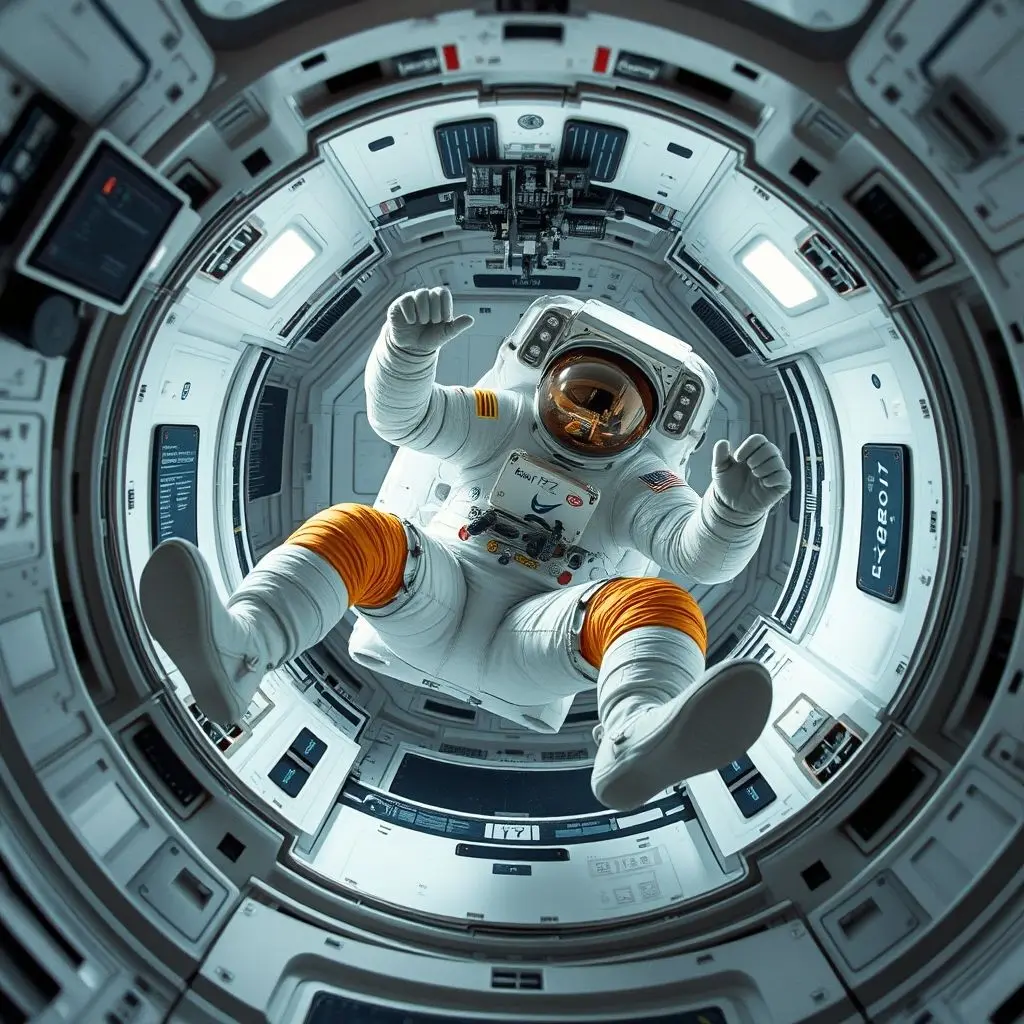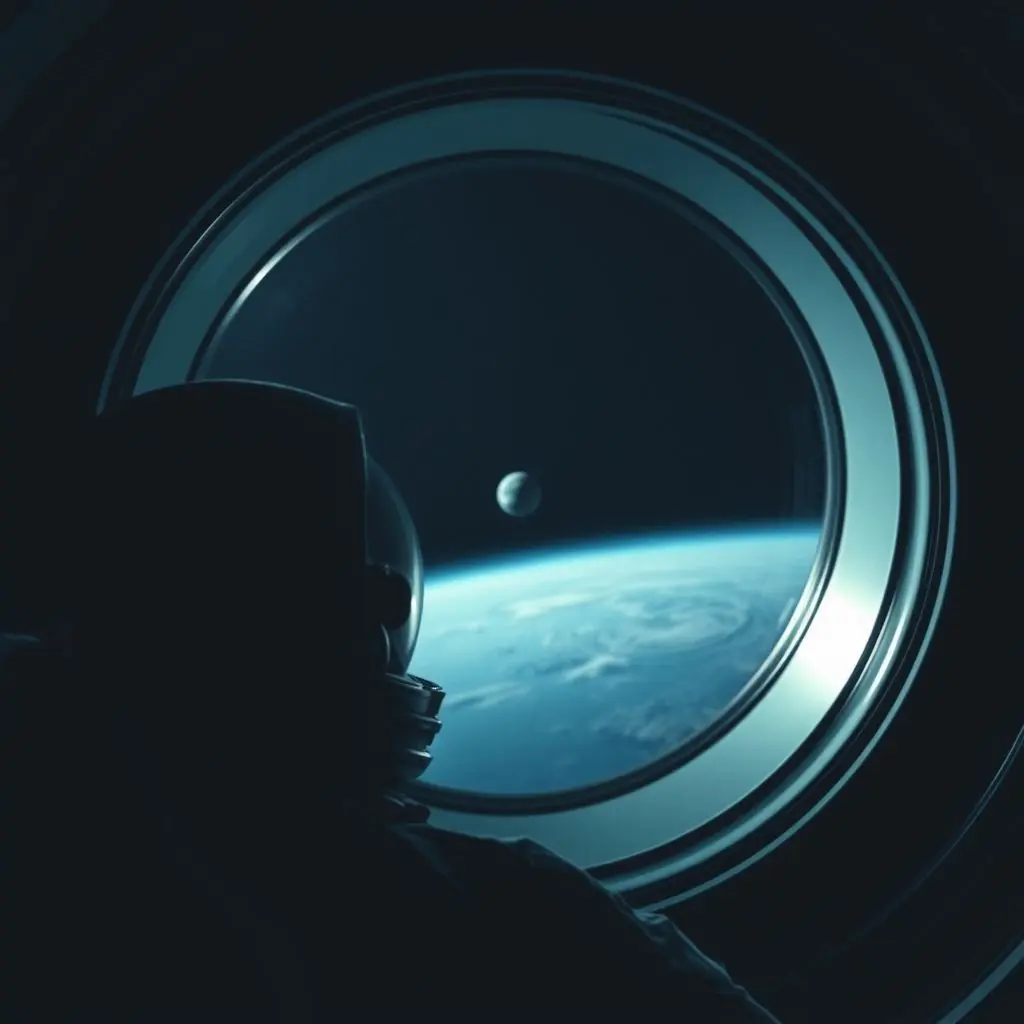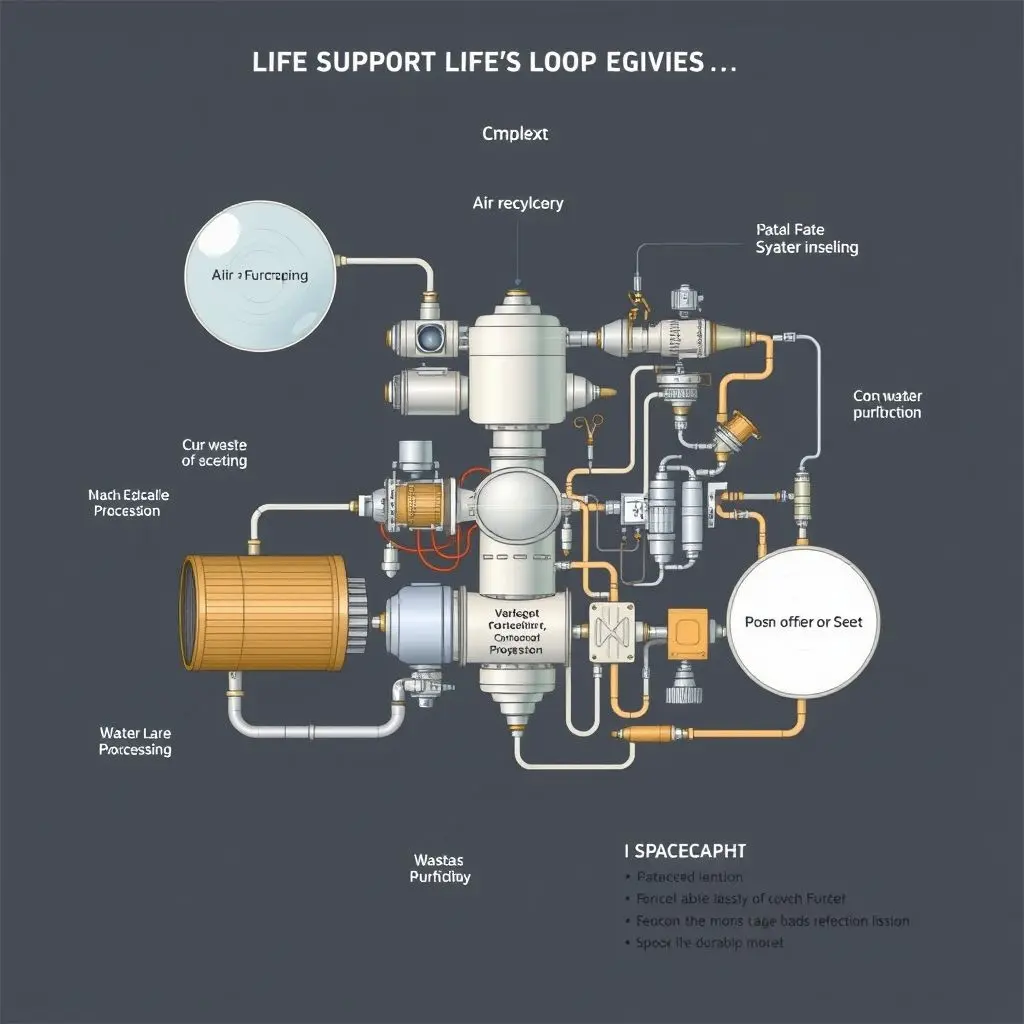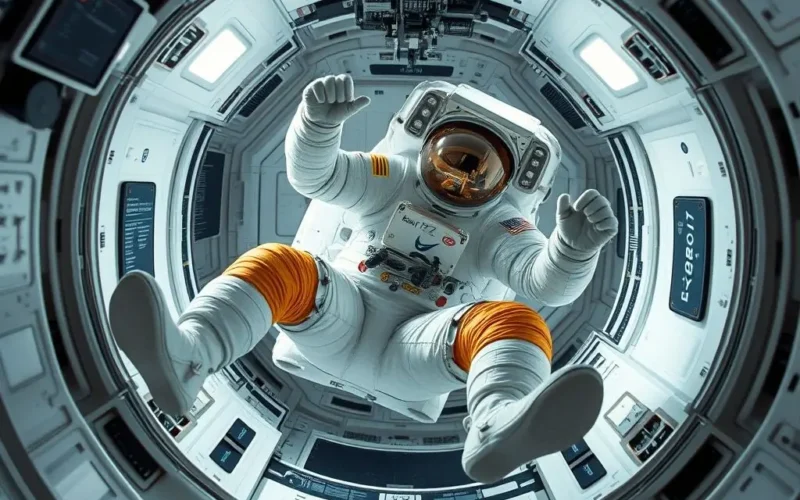The dream of venturing beyond our planetary home, of settling among the stars or simply reaching out to touch distant worlds, has captivated humanity for generations. We picture sleek spacecraft traversing vast cosmic distances, carrying intrepid explorers to new frontiers. But turning that dream into reality, especially missions lasting months or even years far from Earth, is a monumental undertaking. It’s less a sprint and more a cosmic marathon, where every mile is fraught with unique and formidable obstacles.
Thinking about leaving Earth’s embrace for months, even years? We’re talking about long-duration space travel – a challenge that pushes the boundaries of human capability and technological innovation. Beyond the sheer, mind-boggling distance, there are fundamental hurdles that must be cleared before we can confidently set foot on Mars or beyond. To get a quick glimpse into the scale of these challenges, take a moment to watch this:
As the video highlights, the journey isn’t just about propulsion and navigation. It’s about keeping humans alive, healthy, and sane in the most hostile environment imaginable. Let’s delve deeper into the core challenges that define this ultimate frontier.
Table of Contents
The Physical Toll: Battling the Biological Impact of Space
Our bodies evolved under the constant pull of Earth’s gravity and shielded by a thick atmosphere and magnetic field. Remove those protections for extended periods, and the human system begins to protest in fundamental ways.
The Pull of Nothing: Living in Microgravity
What we commonly call ‘zero gravity’ is more accurately microgravity – a state of continuous freefall. While it looks like fun, floating around comes with significant biological consequences:
- Bone Density Loss: Without the mechanical stress of bearing weight, bones begin to lose calcium and mass at an alarming rate, far faster than typical age-related osteoporosis. This can weaken bones and increase the risk of fractures, a severe problem on a planetary surface mission. Countermeasures involve rigorous exercise regimens using resistive machines, but they haven’t fully mitigated the loss on long missions.
- Muscle Atrophy: Similar to bones, muscles, particularly those used for posture and movement against gravity (like in the legs and back), waste away. This reduces strength and endurance, crucial for performing tasks during a mission, especially during landing and surface operations. Intensive daily exercise is mandatory, but regaining full strength upon return to gravity takes time.
- Fluid Shifts: Without gravity pulling blood and other fluids downwards, they shift towards the upper body and head. This causes puffy faces (‘puffy-face bird-leg’ syndrome) and can lead to vision problems (Spaceflight Associated Neuro-ocular Syndrome – SANS) by increasing intracranial pressure. The long-term effects of SANS are still being studied.
- Cardiovascular Deconditioning: The heart doesn’t have to work as hard to pump blood around the body in microgravity. Over time, this can lead to a weakened heart muscle and circulatory system, making readjusting to Earth’s gravity upon return difficult, often resulting in dizziness or fainting.

The Invisible Storm: Space Radiation
Beyond Earth’s protective bubble, astronauts are exposed to significantly higher levels of radiation from two primary sources:
- Galactic Cosmic Rays (GCRs): These are high-energy particles originating from outside our solar system, accelerated by distant supernovae and other cosmic events. They are constantly present, highly penetrating, and very difficult to shield against. Exposure to GCRs increases the risk of cancer, can damage DNA, and potentially affect cognitive function over long durations.
- Solar Particle Events (SPEs): These unpredictable bursts of radiation from the Sun, often associated with solar flares and coronal mass ejections, consist mainly of protons and electrons. While less penetrating than GCRs, SPEs can deliver massive doses in a short time, causing acute radiation sickness or even death if encountered unprotected.
Shielding is complex. While materials like aluminum can block some radiation, they can also cause secondary radiation when hit by high-energy particles. Water, polyethylene, and even waste materials offer better shielding properties. For SPEs, spacecraft can have designated ‘storm shelters’ with thicker walls. However, GCRs remain a persistent challenge, requiring innovative shielding solutions (perhaps active magnetic or electric fields) or pharmacological countermeasures that are still in the research phase.

The Mental Fortitude: The Psychological Landscape of Isolation
Being physically capable isn’t enough. Long-duration missions place extreme stress on the human mind and spirit. Imagine being confined to a relatively small space with the same few people for months or years, with no escape, minimal privacy, and Earth reduced to a distant blue marble.
The Mind’s Isolation Chamber
- Isolation and Confinement: The sheer remoteness from everything familiar – family, friends, nature, personal space – is profoundly challenging. The limited volume of a spacecraft, regardless of how well-designed, creates a feeling of being trapped, which can exacerbate stress and anxiety.
- Monotony and Lack of Stimulus: While space is fascinating, the daily routine of spacecraft operations and research can become repetitive. The unchanging environment inside the capsule, combined with the vast, empty blackness outside, can lead to boredom and a feeling of detachment.
- Interpersonal Dynamics: A small crew in close quarters for an extended period is a crucible for social interaction. Minor annoyances can escalate, and managing conflict becomes critical. Crew cohesion, effective communication, and mutual support are vital for mission success and psychological well-being.
- Separation from Earth: The growing time delay in communication with Earth as a mission travels farther adds to the isolation and makes real-time support or conversation impossible. Seeing Earth shrink in the viewports can also have a complex emotional impact.

Addressing these issues involves careful crew selection, extensive psychological training before and during the mission, providing access to communication with loved ones (within technical limits), offering entertainment and recreational activities, and ensuring crew members have sufficient personal time and space.
The Logistical Knot: The Unyielding Demands of Self-Sufficiency
On Earth, we take infrastructure for granted. In space, every single necessity for survival must be brought along, recycled, or generated onboard with absolute precision. There’s no corner store or emergency services just around the corner.
The Ultimate Supply Chain
- Resource Management (Air, Water, Food, Waste): A mission lasting years requires a highly efficient, closed-loop life support system. Recycling water from urine, sweat, and condensation is essential. Regenerating oxygen from carbon dioxide using plants or chemical processes is critical. Food must be lightweight, nutritious, long-lasting, and ideally varied enough to maintain morale. Waste management is equally important, requiring systems to process or store all refuse. The reliability of these systems is paramount; failure in any one could be catastrophic.
- Power Generation and Storage: Spacecraft need reliable power for all systems – life support, communications, propulsion, experiments, heating, cooling. Solar power is viable for missions closer to the Sun (like to Mars), but requires large arrays. For deeper space, radioisotope thermoelectric generators (RTGs) or even small nuclear reactors may be necessary. Storing power for periods without sunlight or during peak demand is also a challenge.
- System Reliability and Maintenance: Every component must be designed for extreme reliability. Breakdowns are inevitable, however, meaning crews must be trained to perform complex repairs using onboard tools, spare parts, and potentially 3D printing capabilities. A single critical system failure far from Earth could end a mission.
- Communications Delays: As distance increases, so does the time it takes for radio signals to travel to and from Earth. A conversation with Mars involves delays measured in minutes. This impacts command and control, reduces the ability for real-time assistance, and adds to the psychological isolation. Future missions will require greater spacecraft autonomy.

Frequently Asked Questions About Long-Duration Space Travel Challenges
How long is considered ‘long-duration’ space travel?
Typically, missions lasting more than a few weeks are considered long-duration. International Space Station (ISS) missions often last six months or more. A round trip to Mars would likely take at least two to three years, depending on orbital mechanics.
Which is the biggest challenge: physical, mental, or logistical?
It’s difficult to say one is definitively ‘biggest’ as they are all interconnected and critical. A psychological issue can impact a crew’s ability to perform maintenance (logistics), and a logistics failure (e.g., radiation shielding breakdown) has immediate physical and mental consequences. They must all be addressed simultaneously for mission success.
Are we close to solving these problems?
Significant progress has been made, particularly on the ISS, which serves as a testbed for microgravity effects, life support systems, and psychological studies. However, fully mitigating radiation risks for interplanetary missions, developing robust closed-loop systems that last for years, and ensuring crew psychological resilience over such extended periods are ongoing areas of intense research and development. We are moving forward, but solutions require continued innovation.
How is radiation protection being improved?
Research includes developing new, more effective shielding materials (possibly leveraging composites or nanotechnology), exploring active shielding concepts (using magnetic fields), and investigating pharmaceutical or genetic countermeasures to protect the body from radiation damage.
How are mental health challenges addressed?
Astronauts undergo rigorous psychological screening and training. During missions, support includes scheduled private communication with family, access to psychological counseling, provision of entertainment (movies, music, books, games), opportunities for hobbies, and strategies for managing group dynamics and resolving conflicts.
Reaching for the Horizon
Pushing humanity beyond low Earth orbit requires facing these fundamental physical, mental, and logistical hurdles head-on. As a famous explorer once observed, perhaps the greatest danger isn’t the unknown expanse of space itself, but rather the challenge of living sustainably and safely with the known dangers we’ve identified. The engineering prowess to build powerful rockets is immense, but the true measure of our capability to become an interplanetary species lies in our ability to create miniature, self-sustaining worlds capable of carrying life through the void and protecting it every step of the way.
Conquering these challenges isn’t just about survival; it’s about enabling exploration, scientific discovery, and ultimately, expanding humanity’s presence into the cosmos. It is, without question, the ultimate frontier challenge, demanding ingenuity, perseverance, and an unwavering commitment to pushing the boundaries of what is possible.





